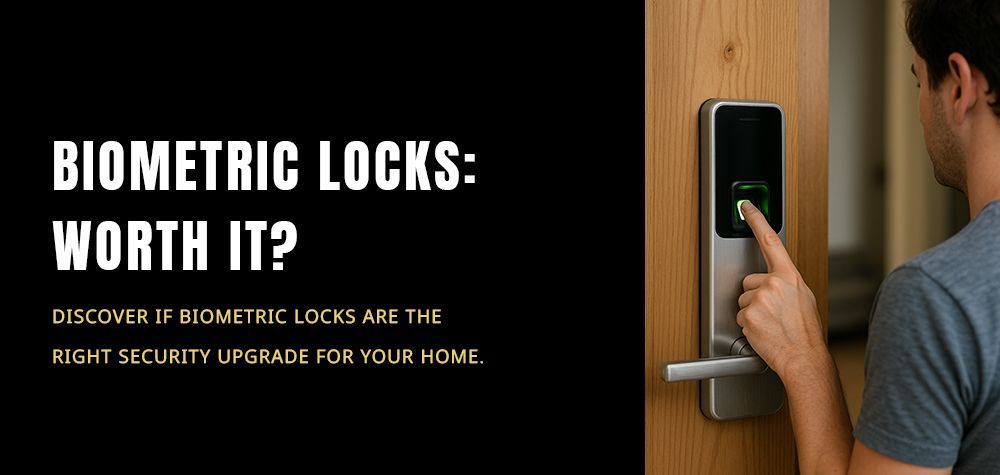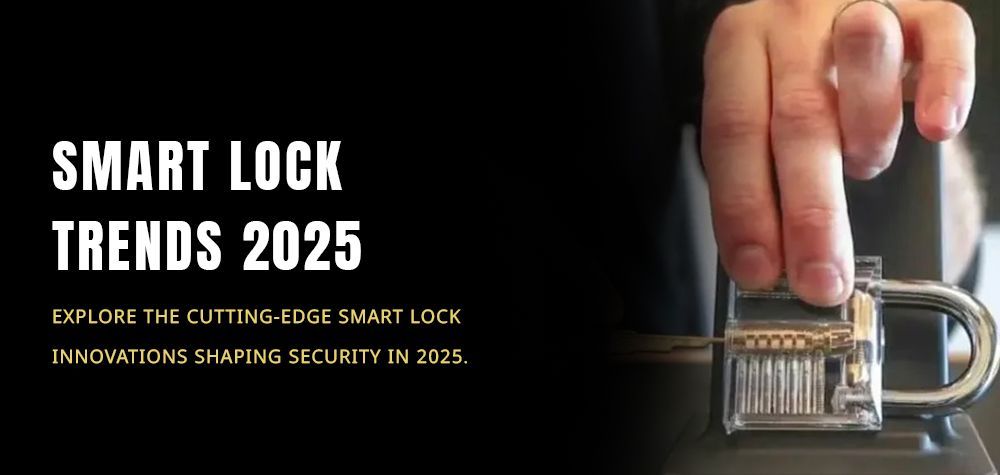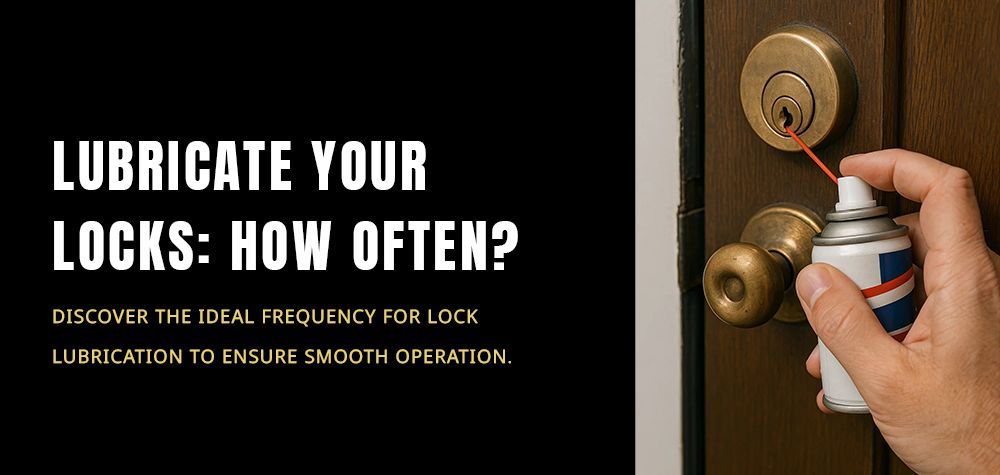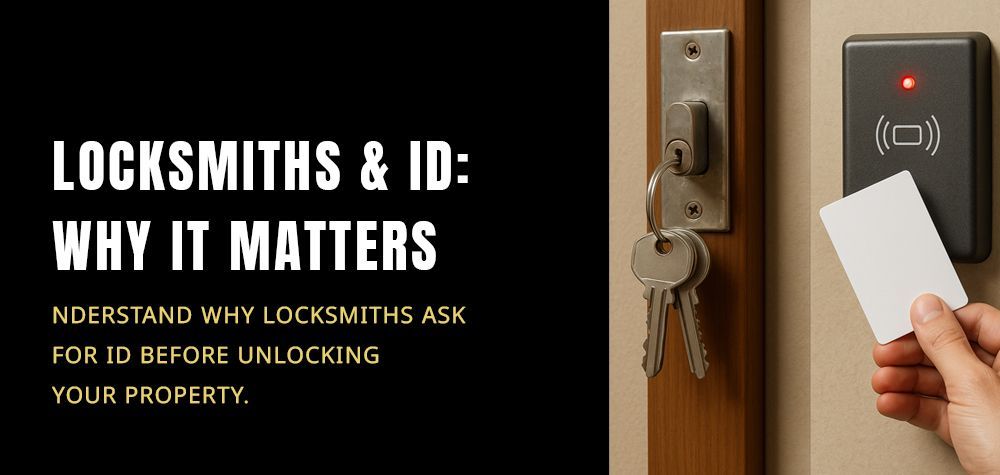Comprehensive Guide to Door Lock Lubricant
How to Lubricate Door Lock
Lubricating your door lock is essential for maintaining smooth and efficient operation. Begin by choosing a high-quality graphite or silicone-based lubricant, as these are ideal for locks. First, remove any visible dirt or debris from the keyhole and lock mechanism. Insert the lubricant nozzle into the keyhole and apply a small amount inside. Next, insert the key and turn it several times to distribute the lubricant evenly throughout the lock. Avoid using oil-based lubricants, as they can attract dust and cause gumming over time. Regular
maintenance ensures your door lock remains functional and secure.
This comprehensive guide aims to educate readers on the importance of door lock lubrication and provide them with the knowledge and tools necessary to maintain their locks effectively. By understanding the various types of door locks and the mechanisms behind them, as well as the different types of lubricants available, readers will be equipped to make informed decisions about lubricating their locks.
To address the question, "How do I lubricate a door lock," begin by selecting a graphite-based lubricant or a dry Teflon spray. Start by cleaning the lock to remove any dirt or debris. Apply the lubricant directly into the keyhole. Insert and turn your key several times to ensure the lubricant is evenly distributed within the lock mechanism. Finally, wipe off any excess lubricant from the key and lock to maintain a clean and smooth operation.
Read more about How to extract a broken key from a lock!
Understanding Door Locks
Types of Door Locks
Pin and Tumbler Locks:
Pin and tumbler locks are one of the most common types of door locks, typically found in residential and commercial settings. They consist of a series of spring-loaded pins of varying lengths that align with a corresponding set of tumblers within the lock cylinder. When the correct key is inserted, the pins are lifted to the correct height, allowing the lock to turn and open. Pin and tumbler locks offer a balance of security and affordability, making them popular choices for many applications.
Deadbolt Locks:
Deadbolt locks are known for their robustness and are often used as an additional layer of security for exterior doors. Unlike latch bolts, which are spring-loaded and retract when the knob is turned, deadbolts require manual operation to extend and retract the bolt into the door frame. This makes them more resistant to forced entry, as they do not rely on spring tension to remain locked. Deadbolt locks come in various configurations, including single-cylinder, double-cylinder, and keyless entry options, offering flexibility to suit different security needs.
Electronic Locks:
Electronic locks, also known as digital locks or smart locks, utilize electronic components such as keypads, touchscreens, or biometric scanners to control access to a property. They offer convenience and advanced features such as remote access, user-specific access codes, and integration with home automation systems. Electronic locks can be powered by batteries or connected to a power source, and some models may include mechanical key overrides for backup access. While electronic locks provide modern security solutions, they may require periodic maintenance and battery replacement to ensure reliable operation.
Read more about Door lock problems you must address!
How Door Locks Work
Internal Mechanisms:
Door locks function through a combination of mechanical components housed within the lock cylinder and the door frame. For pin and tumbler locks, inserting the correct key lifts the pins to align with the shear line, allowing the lock to turn. Deadbolt locks extend a solid metal bolt into the door frame, preventing the door from being opened without proper authorization. Electronic locks use electronic circuits and sensors to authenticate access, either by entering a code, using a key fob, or scanning a biometric identifier. Each type of lock has its own unique set of internal mechanisms that govern its operation.
Common Issues with Door Locks:
Despite their reliability, door locks can experience various issues over time. Common problems include key jamming, where the key becomes stuck or difficult to turn in the lock cylinder; stiffness, resulting in resistance when operating the lock mechanism; lock freezing during cold weather, preventing the lock from turning smoothly; and key breakage due to excessive force or wear. Additionally, electronic locks may encounter issues with battery drainage, malfunctioning keypads, or connectivity issues with remote access systems.
Importance of Lubrication:
Proper lubrication is essential for maintaining the smooth operation of door locks and preventing mechanical issues. Lubricants help reduce friction between moving parts, allowing the lock mechanism to function effortlessly. Additionally, lubrication can help protect against rust and corrosion, particularly in outdoor locks exposed to the elements. Regular lubrication not only extends the lifespan of the lock but also enhances its security by ensuring that it operates reliably when needed. Neglecting lubrication can lead to premature wear and potential lock failures, compromising the security of the property.
Read here about the Types of locks and their application!
Types of Door Lock Lubricants
Graphite Lubricants:
Graphite lubricants consist of fine graphite powder suspended in a solvent carrier. When applied to door locks, the graphite particles penetrate the internal components, reducing friction between moving parts and ensuring smooth operation. Graphite lubricants are known for their dry, non-sticky properties, making them ideal for use in environments where dust and debris may accumulate. However, graphite lubricants may leave a black residue, which can stain clothing or surfaces if not applied carefully.
Silicone Lubricants:
Silicone lubricants contain silicone oil or grease, which provides excellent lubrication properties and water resistance. Silicone lubricants are compatible with most materials used in door locks, including metal, plastic, and rubber, making them versatile for various applications. They offer long-lasting lubrication and are resistant to temperature extremes, making them suitable for both indoor and outdoor use. Additionally, silicone lubricants typically do not attract dust or dirt, helping to keep the lock mechanism clean and functioning smoothly.
Teflon-Based Lubricants:
Teflon-based lubricants utilize polytetrafluoroethylene (PTFE), commonly known as Teflon, as the lubricating agent. Teflon provides excellent lubrication properties and reduces friction between moving parts, resulting in the smooth and effortless operation of door locks. Teflon-based lubricants are durable and resistant to moisture and corrosion, making them suitable for use in various environmental conditions. They are also known for their non-stick properties, which help prevent the accumulation of dirt and debris within the lock mechanism.
Oil-Based Lubricants:
Oil-based lubricants contain mineral oil or synthetic oils, which provide lubrication and protection to door locks. These lubricants penetrate deep into the internal components of the lock, reducing friction and preventing rust and corrosion. Oil-based lubricants offer excellent lubricating properties and are suitable for use in both high and low temperatures. However, they may attract dust and dirt over time, leading to potential buildup and affecting the performance of the lock if not cleaned regularly.
Water-Based Lubricants:
Water-based lubricants are environmentally friendly alternatives to oil-based lubricants, consisting of water as the primary solvent with added lubricating agents. These lubricants provide adequate lubrication for door locks while being non-toxic and biodegradable. Water-based lubricants are suitable for use in indoor settings where oil-based products may be undesirable due to odor or potential staining. However, they may not offer the same level of long-term protection against rust and corrosion as oil-based lubricants.
Comparison of Lubricant Types:
In this section, we will compare the various characteristics of each lubricant type, including lubricating properties, compatibility with different lock materials, resistance to temperature extremes and moisture, ease of application, longevity of lubrication, and potential drawbacks such as residue or staining. This comparison will help readers choose the most suitable lubricant for their specific needs and preferences.
Choosing the Right Lubricant
Compatibility with Lock Materials:
Consider the materials used in your door locks when choosing a lubricant. Ensure that the lubricant is compatible with metal, plastic, and rubber components commonly found in lock mechanisms. Using an incompatible lubricant could cause damage to the lock over time.
Environmental Considerations:
Assess the environmental conditions in which the lock will be used. For outdoor locks exposed to moisture and temperature fluctuations, choose a lubricant that offers resistance to rust and corrosion. Indoor locks may require lubricants that are odorless and non-toxic, especially in residential settings.
Longevity of Lubrication:
Evaluate the longevity of lubrication provided by each lubricant type. Some lubricants offer long-lasting protection, while others may require more frequent reapplication. Choose a lubricant that suits your maintenance schedule and provides reliable performance over time.
Ease of Application:
Consider the ease of application when selecting a lubricant. Some lubricants come in convenient spray bottles or applicator pens, making them easy to apply to hard-to-reach areas of the lock mechanism. Others may require disassembly of the lock for proper lubrication, which can be more time-consuming.
Residue and Staining:
Be mindful of potential residue and staining left behind by the lubricant. Certain lubricants, such as graphite-based lubricants, may leave a black residue that can stain clothing or surfaces if not applied carefully. Choose a lubricant that minimizes residue and staining, especially for locks located in visible areas.
Budgetary Considerations:
Determine your budget for lubricants and compare the prices of different options. While some lubricants may be more expensive upfront, they may offer better long-term protection and require less frequent reapplication. Consider the overall value and performance of the lubricant in relation to its cost.
How to Lubricate a Door Lock
Preparation:
- Gathering Materials: Collect the necessary materials, including the chosen lubricant, a rag or paper towel for cleaning, and any tools required for lock disassembly (if necessary).
- Safety Precautions: Before beginning the lubrication process, ensure the area around the lock is well-lit and ventilated. Wear gloves to protect your hands from any chemicals or debris.
B.Cleaning the Lock:
- Removing Debris: Use a brush or compressed air to remove any visible debris or dirt from the lock mechanism. This ensures that the lubricant can penetrate effectively and prevents contaminants from interfering with the lock's operation.
- Using Solvents (if necessary): For stubborn dirt or residue, use a mild solvent such as isopropyl alcohol to clean the lock components. Apply the solvent sparingly to avoid damaging plastic or rubber parts, and allow it to evaporate completely before proceeding.
Applying the Lubricant:
- Graphite Lubricants: Insert the nozzle of the graphite lubricant into the keyhole and apply a small amount of lubricant. Insert and remove the key several times to distribute the lubricant evenly throughout the lock mechanism.
- Silicone Lubricants: Spray or apply a small amount of silicone lubricant directly into the keyhole and along the keyway. Use the nozzle or applicator provided to reach tight spaces and moving parts.
- Teflon-Based Lubricants: Apply a thin layer of Teflon-based lubricant to the key or directly into the keyhole. Insert and turn the key several times to distribute the lubricant evenly.
- Oil-Based Lubricants: Apply a small amount of oil-based lubricant to a cloth or cotton swab and wipe it onto the key or directly into the keyhole. Turn the key several times to work the lubricant into the lock mechanism.
- Water-Based Lubricants: Apply the water-based lubricant directly into the keyhole or use a dropper to apply it to the lock mechanism. Allow the lubricant to penetrate for a few minutes before testing the lock.
Testing the Lock:
After applying the lubricant, test the lock by inserting and turning the key several times. Check for smooth operation and any signs of resistance or sticking. If the lock still feels stiff or difficult to operate, reapply the lubricant and test again. Once satisfied with the lock's performance, wipe away any excess lubricant from the exterior of the lock with a clean cloth.
Maintaining Door Locks
Regular Inspection:
Regularly inspect your door locks for signs of wear, damage, or malfunction. Check for loose screws, misaligned components, or any unusual noises or resistance when operating the lock. Addressing minor issues early can prevent more significant problems from developing.
Cleaning:
Keep your door locks clean by removing dirt, dust, and debris regularly. Use a soft brush or compressed air to clean the keyhole and other accessible parts of the lock mechanism. Wipe down the exterior of the lock with a damp cloth to remove any surface grime or buildup.
Reapplication of Lubricant:
Periodically reapply lubricant to your door locks to maintain smooth operation and prevent corrosion. Follow the manufacturer's recommendations for lubrication intervals based on usage and environmental conditions. Choose the appropriate lubricant type for your lock and apply it according to the instructions provided in the lubrication section.
Addressing Issues Promptly:
Act promptly to address any issues or abnormalities with your door locks. If you notice difficulty turning the key, stiffness, or unusual noises when operating the lock, investigate the cause and take corrective action as needed. Ignoring problems can lead to further damage and compromise the security of your property.
Troubleshooting Common Lock Problems
Key Jamming:
- Cause: Key jamming can occur due to debris or dirt buildup in the keyway, misalignment of lock components, or worn-out keys.
- Solution: Try gently wiggling the key while turning it to dislodge any debris. Clean the key and keyway with a soft brush or compressed air. If the problem persists, inspect the key for signs of damage or wear and consider having a duplicate made.
Stiff Locks:
- Cause: Stiff locks may result from lack of lubrication, rust or corrosion, misalignment of internal components, or excessive friction between moving parts.
- Solution: Apply lubricant to the lock mechanism according to the manufacturer's recommendations. If the lock is rusted or corroded, use a rust remover or penetrating oil to loosen the components. Check for misaligned parts and adjust or replace them as needed.
Lock Freezing:
- Cause: Lock freezing occurs when moisture penetrates the lock mechanism and freezes, preventing the lock from turning.
- Solution: Apply a de-icing solution or heat source (such as a hairdryer or warm towel) to thaw the lock. Prevent future freezing by using a water-resistant lubricant or covering outdoor locks during inclement weather.
Key Breakage:
- Cause: Key breakage can result from excessive force, worn-out keys, or weak key materials.
- Solution: If a key breaks off in the lock, use tweezers or needle-nose pliers to carefully remove the broken piece. Avoid using excessive force, as this can damage the lock further. Replace the broken key with a new one or have a locksmith create a duplicate.
Unusual Noises:
- Cause: Unusual noises such as grinding, scraping, or clicking may indicate worn-out or misaligned lock components, loose screws, or foreign objects inside the lock.
- Solution: Inspect the lock mechanism for loose screws, misaligned parts, or foreign objects. Tighten any loose screws and remove any debris or obstructions from the keyway. If the problem persists, lubricate the lock or consult a locksmith for further assistance.
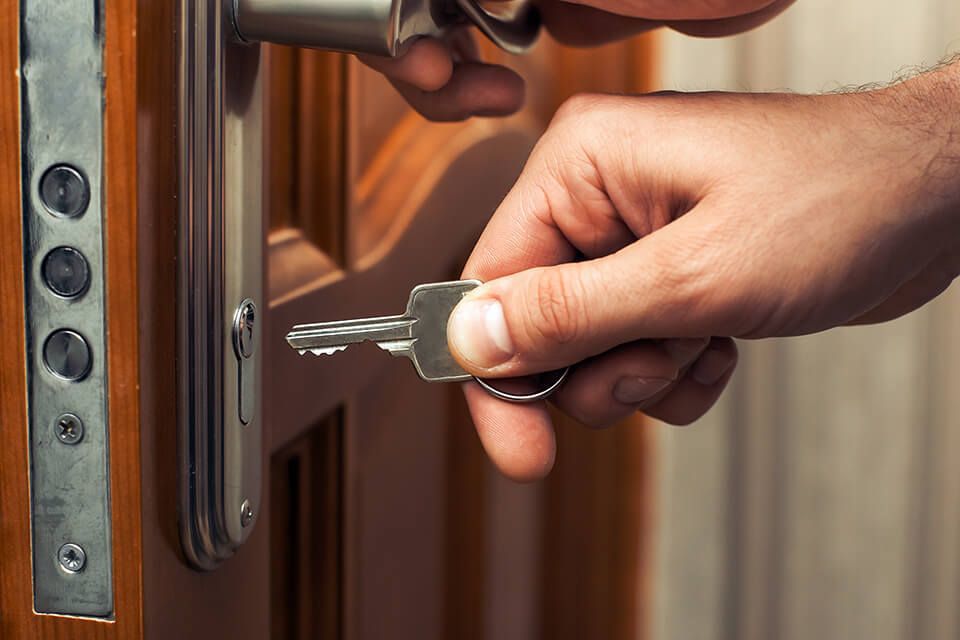
Conclusion
In conclusion, maintaining the smooth operation of your door locks is crucial for the security and functionality of your property. By following the guidelines outlined in this comprehensive guide, you can ensure that your door locks remain in optimal condition for years to come.
We've discussed the importance of door lock lubrication and explored the various types of lubricants available, along with their respective advantages and considerations. Understanding the types of door locks, how they work, and common issues that may arise has equipped you with the knowledge needed to troubleshoot and address any problems effectively.
From choosing the right lubricant to proper application techniques and ongoing maintenance practices, this guide has provided you with the tools and information necessary to keep your door locks operating smoothly. Regular inspection, cleaning, and reapplication of lubricant will help prevent issues such as key jamming, stiff locks, lock freezing, key breakage, and unusual noises.
Remember, addressing minor issues promptly can prevent more significant problems from developing and ensure the security of your property remains uncompromised. By incorporating these maintenance practices into your routine, you can enjoy peace of mind knowing that your door locks are functioning optimally.
Call Us Any Time!


